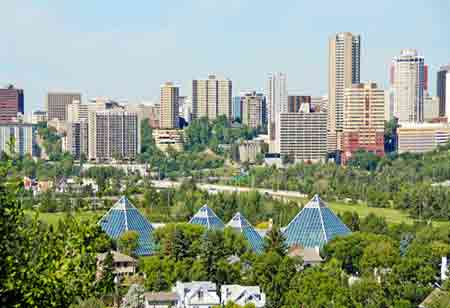Thank you for Subscribing to Construction Business Review Weekly Brief
Specials
- MEP Canada
- Kitchen and Bath
- Decking Canada
- Architectural Glass Europe
- MEP APAC
- Construction Saudi Arabia
- German Apartment and Condominium Contractors
- Construction Law APAC
- Outdoor Construction
- Foundation Construction Canada
- Building Sealing Solutions Europe
- Apartment and Condominium Contractors Canada
- Cold Storage Construction APAC
- Precast Concrete Europe
- Construction Staffing Europe
- Pre-Construction Services
- Flooring System APAC
- Scaffolding Canada
- Swimming Pool Construction Canada
- Construction Management Canada
- Dummy
- Building Restoration and Maintenance Canada
- Residential Construction
- Concrete Canada
- Construction Cladding Europe
- Construction Cladding APAC
- Concretes, Aggregates and Construction Materials APAC
- Concretes, Aggregates and Construction Materials Europe
- Commercial Contractors Europe
- Commercial Contractors APAC
- Cold Storage Construction Canada
- Flooring Systems Europe
- Construction Management APAC
- Landscaping Canada
- Construction Coating Europe
- Construction Tech Startups Europe
- Insulation Services Europe
- Mechanical Contractor Canada
- Mould Remediation and Testing Europe
- Swimming Pool Construction APAC
- Construction Engineering Services
- Mechanical Electrical and Plumbing
- Roofing Systems Europe
- Architectural Glass APAC
- Startups APAC
- Forensic and Owners Representative
- Flooring System
- Waterproofing APAC
- Wall Systems
- Safety and Compliance Europe
- Construction Bidding and Auctions
- Modular and Prefab Construction
- Architectural Glass
- Construction MENA
- Construction Demolition and Recycling Europe
- Modular Construction Europe
- Construction Interiors
- Steel Building APAC
- HVAC
- Doors and windows
- Modular Construction APAC
- Insulation, Coating and Waterproofing
- Building Information Modeling APAC
- Sustainable Construction APAC
- Building Restoration and Maintenance
- Commercial Contractors
- Specialty Construction
- Construction Engineering Canada
- Construction Engineering MENA
- Modular Construction Canada
- Roofing and Siding Systems
- Construction Latam
- Workforce Management and Staffing
- Roofing Systems APAC
- Construction Consulting
- Steel Building Europe
- Construction Demolition and Recycling APAC
- Safety and Compliance APAC
- Concretes, Aggregates and Materials
- Construction Cladding
Canada's Leap into Regenerative Design
Canada is adopting regenerative design to combat climate change and biodiversity loss, aiming for net-positive outcomes that restore ecosystems and integrate purpose in project development.

By
Construction Business Review | Tuesday, August 05, 2025
Stay ahead of the industry with exclusive feature stories on the top companies, expert insights and the latest news delivered straight to your inbox. Subscribe today.
Fremont, CA: Canada is embracing regenerative design as a transformative response to the urgent challenges of climate change and biodiversity loss. This approach extends far beyond traditional sustainability, which focuses on minimizing harm. Regenerative design seeks to actively restore, renew, and revitalize ecosystems and communities, creating projects that are not only "less bad" but are, in fact, "net positive." This evolution is transforming the landscape of purpose-driven projects nationwide, from urban centers to remote communities.
The Paradigm Shift: From Sustainability to Regeneration
For decades, sustainability has served as the cornerstone of environmental initiatives in Canada and globally, with frameworks such as LEED certification and net-zero targets playing a pivotal role in minimizing the ecological impact of buildings and infrastructure. Yet, as the extent of environmental degradation becomes increasingly apparent, there is a growing consensus among designers, developers, and policymakers that simply mitigating harm is no longer sufficient.
In response, regenerative design is emerging as a transformative approach that redefines the relationship between human and natural systems. Unlike traditional sustainability, which often focuses on minimizing harm, regenerative design actively seeks to restore and enhance ecosystems. It adopts a holistic, systems-based perspective—viewing human activity not as separate from, but as an integral component of, living systems. At its core is the ambition to establish a co-evolutionary relationship between human development and the natural environment, one that is mutually beneficial to both.
Whole systems thinking encourages consideration of a project’s entire lifecycle and its interconnectedness with the surrounding ecosystem, from soil health and water cycles to community well-being and economic resilience. Place-based solutions prioritize designs that respond to the unique ecological and cultural context of a location, often incorporating Indigenous and traditional environmental knowledge that has long supported harmonious living with nature. Regenerative design aims to achieve net-positive outcomes—projects that generate more value than they consume. This might involve buildings that generate surplus renewable energy, improve water quality, or enhance biodiversity through features such as green roofs that manage storm water and provide habitats.
Purpose-Driven Projects in Canada
The idea of "purpose-driven projects" in Canada has a rich and varied history. Early examples can be seen in the development of institutions like the Canadian Museum of History, which was established with the mandate to enhance Canadians' knowledge and appreciation of their history and identity. In the business world, the concept of corporate social responsibility (CSR) has driven companies to consider their impact on communities and the environment.
However, the regenerative design movement represents a new chapter. It's a move away from simply adding a social or environmental component to a project, and toward integrating purpose into the very DNA of a project from its inception. This means that a project's success is not just measured by its financial return, but by its positive contributions to ecological health, social equity, and community resilience.
As Canada moves forward, the adoption of regenerative design principles will be crucial for building a resilient, equitable future. It’s a journey that is transforming not just buildings and cities, but the very relationship with the world around —a trip from simply coexisting with nature to actively collaborating with it to create a world worth living in.





